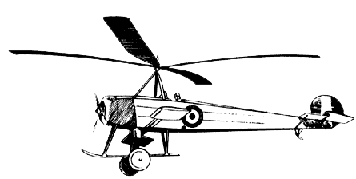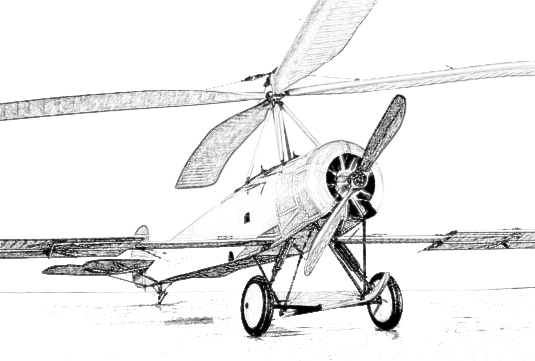

Gyrocopter looks like a small helicopter but the main difference is there is no engine turning the main rotor. The rotor simply self-propel (which we call "auto-rotate") due to the way that the air flows through them. It also does not have a tail rotor.
As the engine is not connected to the rotors, this means that a Gyrocopter is not seriously affected if the engine should stop in flight. This, together with a very short landing roll (we can land in a very small open space, about the size of a putting green), means that a Gyrocopter is one of the safest methods of flying.
Today, Gyrocopters are one or two-seat aeroplanes whose maximum take-off weight does not exceed 450kgs (560 kgs EASA). Modern Gyrocopters offer superb performance, comfort and above all have a safety record second to none in aviation.

The next convenient difference to a helicopter is the price. It runs on unleaded petrol. The running cost is 80 to 100 Euros an hour whilst that of a small helicopter will be in the region of 10 to 15 times more.

A Spanish civil engineer, pilot and aeronautical engineer, Juan De la Cierva vowed to develop an aircraft that could fly safely at low airspeeds, which resulted in the first successful rotorcraft, which he named Autogiro in 1923. Cierva's autogyro used an airplane fuselage with a forward-mounted propeller and engine, a rotor mounted on a mast, and a horizontal and vertical stabilizer.
The term Autogiro was a trademark of the Cierva Autogiro Company. Juan De la Cierva started building the aircraft as early as 1912, and in 1919 he started to consider the use of a rotor to generate lift at low airspeed, and eliminate the risk of stall. In order to achieve this, he utilized the ability of a lifting rotor to autorotate, whereby at a suitable pitch setting, a rotor will continue to rotate without mechanical drive, sustained by the torque equilibrium of the lift and drag forces acting on the blades.
Cierva developed his C.6 model with the assistance of Spain's Military Aviation establishment, having expended all his funds on development and construction of the first five prototypes. The C.6 first flew in February 1925, including a flight of 10.5 km (6.5 mi) from Cuatro Vientos airfield to Getafe airfield in about 8 minutes, a significant accomplishment for any rotorcraft of that time.
| Gyrocopter | Helicopter | Fixed Wings |
|---|---|---|
| Cannot Hover | Can Hover | Don't try to Hover |
| Cannot take-off Vertially | Can take-off Vertially | Cannot take-off Vertially |
| Cannot land purely Vertically | Can land Vertically | Cannot land Vertically |
| Need very short take-off Strip | Take-off Strip not needed | Needs a take-off Strip |
| Needs it's length to land | Needs it's length to land | Needs a landing Strip |
| Very Little sensibility to turbulances | Medium sensibility to turbulances | Sensibile to turbulances |
| Larger flight envelope than fixed wings | Larger flight envelope than fixed wings | Limited flight envelope |
| Easy to pilot | Complex to pilot | Rather easy to pilot |
| Excellent manoeuvrability | Superior manoeuvrability | Average manoeuvrability |
| Easy for maintenance | Relatively heavy maintenance | Relatively easy for maintenance |
| Less expensive than helicopter | Rather expensive | Slightly less expensive than gyrocopter |
| Needs more power than fixed-wing / trikes | Needs a lot of power | Needs less power than gyrocopter |